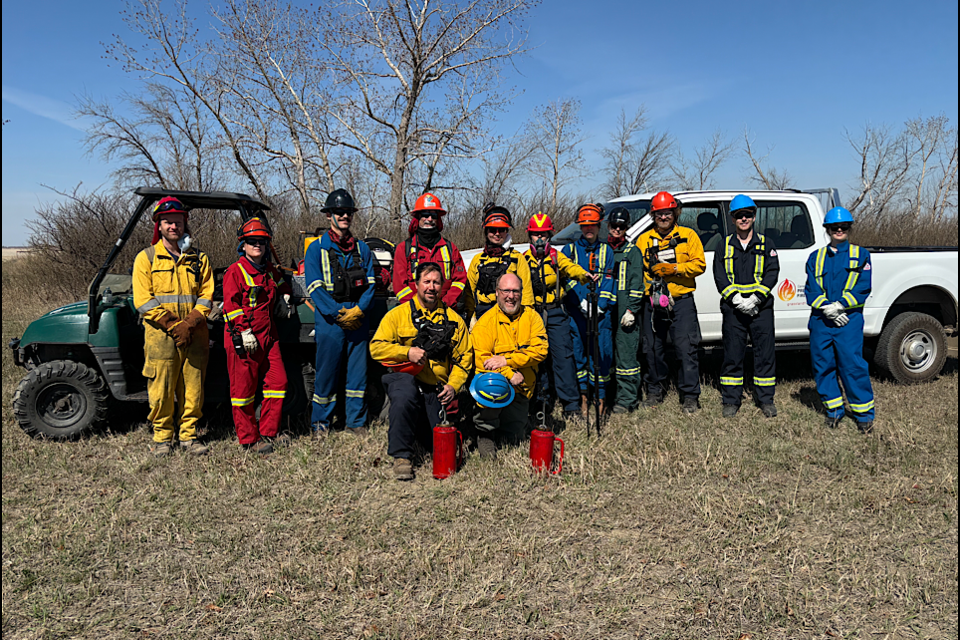REGINA - The Ministry of Parks, Culture and Sport was busy Friday fighting potential fire with fire,
The site was at the Condie Nature Refuge located north of the city. A prescribed burn took place on an area of 4.5 hectares over a span of 60 to 90 minutes.
There were a number of purposes to the burn, the main one being to help prevent wildfires in the area by removing old material. The burn is also done to restore and maintain healthy grasslands and to control and remove invasive plant species, which will then allow native plants to grow in the space.
Dale Gross, Senior Grassland Ecologist with the Landscape Protection Unit, Saskatchewan Parks, explained what they planned to do at the site.
“We've prepared the site for burning. So there's mowed lines all around, control lines that help us prevent a fire from crossing it. We have our equipment here with water, water pumps, tanks, hoses, nozzles to prevent any kind of fire from escaping that, our boundary that we want the fire to be in and our skilled personnel. So together… that's a winning combination.
“The landowners, the people in the area have been notified. We have our burn plans and permits in place. So we're just bringing everybody together under ideal weather conditions to send the smoke over the reservoir. Not going to be in anybody's way. And, with that, we should have a good day.”
In terms of the weather conditions to make sure the burn is a go, Gross said they look at wind speed, relative humidity, wind direction, and air temperature. They need to be under the wind speeds of 20-25 km an hour in order to proceed.
Gross said these regular burns are something the ministry is getting back to doing.
“Last year, we had a few small burns. This year, we've had three already. So, it's building a program. And with the help of our partners, we've had success so far.”
The ground at the Condie Nature Refuge burn site looked pitch black immediately afterwards, but it will not stay that way for long.
“The recovery following burns in the prairies is pretty quick,” said Gross. “But right here, you're just going to see in a couple of days, probably some green grass growing back, some black right away here today, but it doesn't take very long to recover.”
Fire typically has a negative reputation, as it is usually associated with widespread damage in places such as in Fort McMurray, Jasper and recently Los Angeles.
“Yeah, humans have a really mixed history with fire. Obviously, you see the news. It can be devastating,” said Gross.
What prescribed fires are, said Gross, are “preventative measures to control problems that may come up later.” In this case, these fires are set to remove what fuels wildfires in the first place.
In this case, that fuel is invasive grass. Gross said they are trying to reduce their cover, biomass, and fuel load in the area where we're treating.
“So it's just fuel, it's fuel management. And that's a big thing that I hope everybody understands is that we're trying to reduce that fuel so that perhaps accidental ignition happens later. Flicking a cigarette outside of a car window as you drive by is the worst thing ever… but in this area, that problem will be addressed because black won't burn again. So we'll have that protection in this area at least so that we (have) hay here, we have sheep grazing later in the year.”




